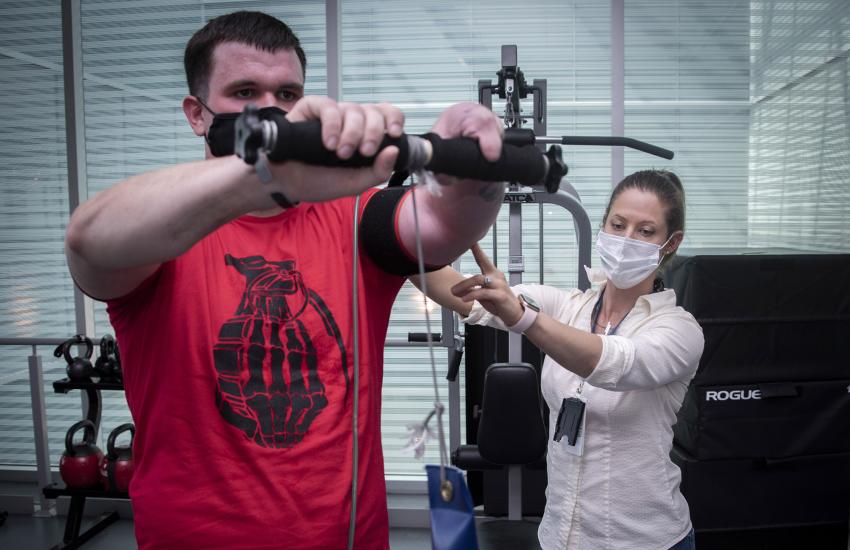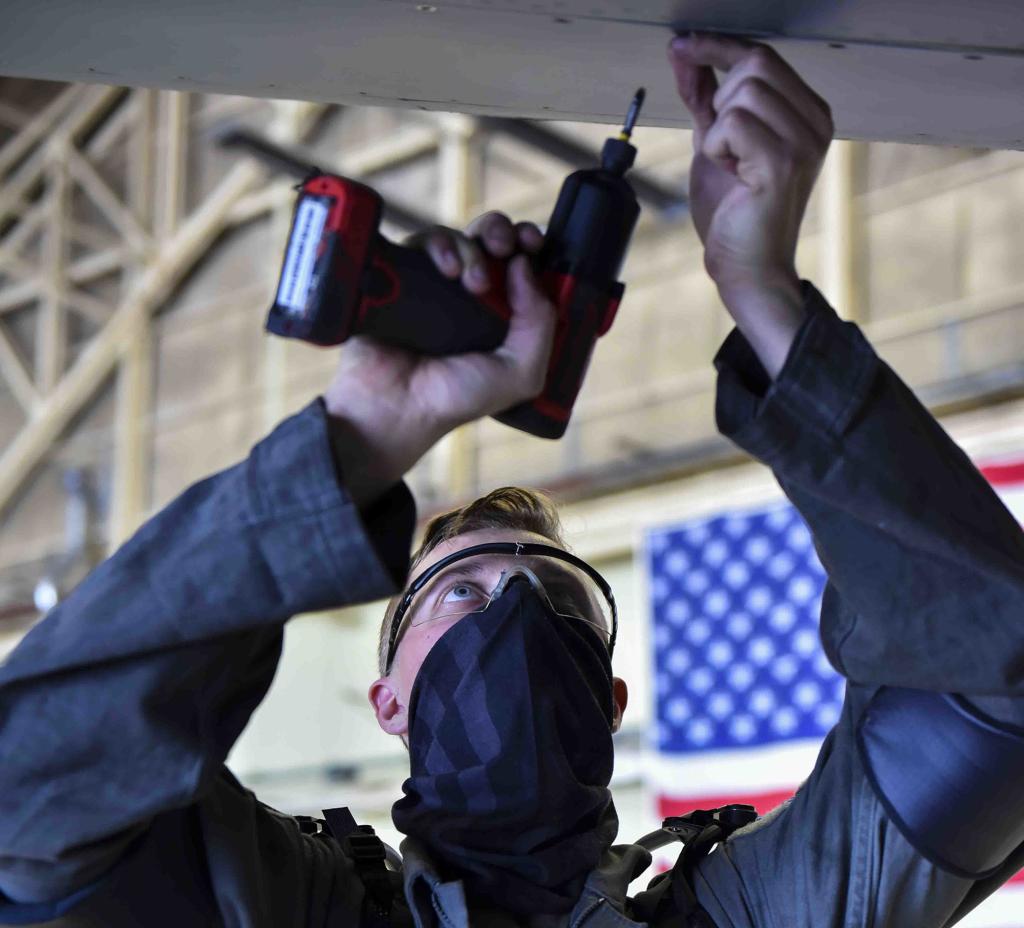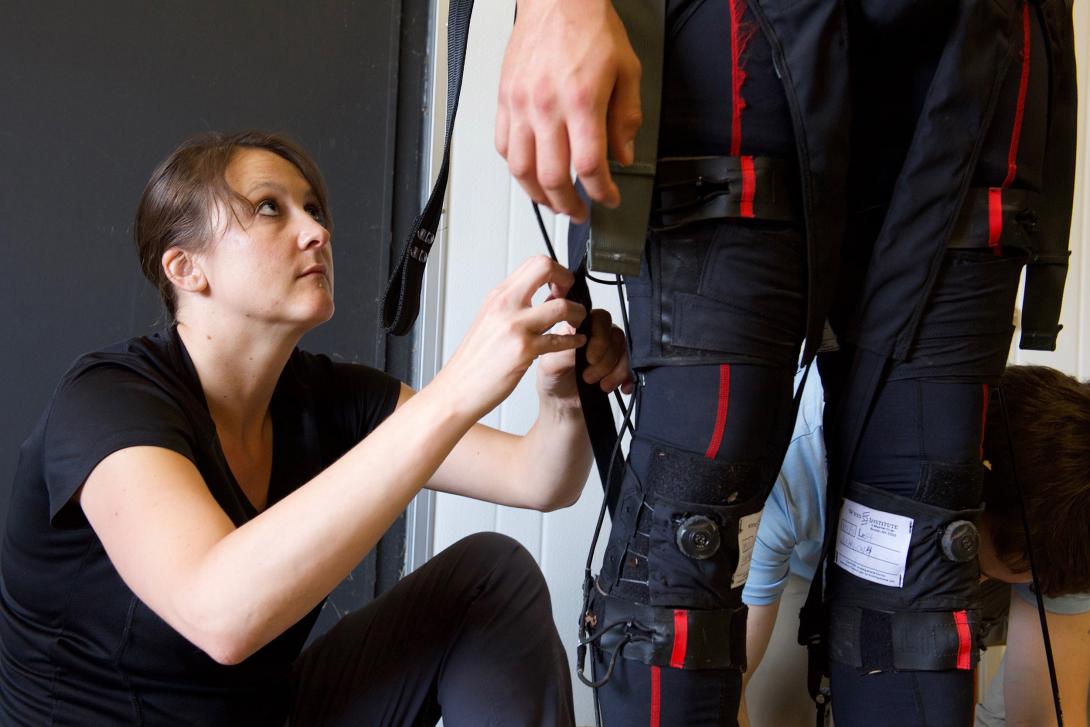The Rise of the Humanoid: Exoskeletons Revolutionizing Military Readiness
Soldiers may soon be wearing equipment that physically strengthens and protects them, as well as potentially improves their cognitive abilities on the battlefield.
Artillery soldiers carry heavy rounds, lift a howitzer several times a day and dig defense positions. Other warfighters need to push, shift and pull equipment. Over time, these efforts can deteriorate their bodies.
According to a technical information paper by the Defense Centers for Public Health, spine and back injuries accounted for 28.3% of all noncombat wounds among soldiers in the U.S. Army in 2021. The overwhelming majority occurred because of overuse—a result of repetitive or prolonged musculoskeletal loading, such as heavy lifting and other strenuous jobs performed by soldiers.
To better understand the scale of the problem, there are more than 1,000 musculoskeletal injuries diagnosed in the Army every day, according to the same source.
And injuries hamper readiness, which thereby affects the mission.
“At any given time across the U.S. Army, about 4% of active component service members cannot deploy because of non-combat musculoskeletal injuries,” according to a paper by Booz Allen.
This problem led the Army Futures Command and Vanderbilt University jointly to develop equipment that helps soldiers lift weight.
“The suits have really been helping, especially on the lower back area with all the heavy lifting we’ve been doing,” Sgt. Alfredo Vela, an artillery man with the 101st Airborne Division, said in a release.
But not all exoskeletons are created equal. The jointly developed suits combine robotics and biomechanics to help support muscles. This specific type has no motors and, therefore, is considered passive.
The passive exoskeleton market value in North America is mostly driven by military use and will grow from $752.7 million in 2021 to 4.8 billion in 2031, according to Business Research Insights, a market analysis company.

In the case of the equipment developed by Vanderbilt University and the Army Futures Command, the suits hit where it hurts.
“Field artillery soldiers and some of the other jobs, particularly maintenance and sustainment, are just really physically demanding, having high rates of musculoskeletal injuries,” said Karl Zelik, engineering professor at Vanderbilt University and chief scientific officer of Herowear.
Passive exoskeletons for military use are more complicated than industry models, which is a result of the extreme demands on warfighters’ bodies.
“They need to move the field artillery work, which have 50-to-100-pound artillery boxes and artillery rounds that they need to move. Typically, on the civilian side, there are additional ergonomic controls that limit the size and weight of objects that people need to handle, but the soldiers just have these amplified demands,” Zelik explained to SIGNAL Media in an interview
And unlike industrial workers, soldiers must wear other large and heavy protective gear while running, crawling and climbing.
Passive devices help reduce back strain, which has added value for other types of service members, such as military doctors.
“A recent study out of Iowa State University found that while doing tasks that involved bending forward, so they’re interested in surgeons and some of the physical demands of having to maintain a bent forward posture while doing work, they found that wearing an exosuit could actually improve some of the cognitive performance,” Zelik explained.
This would be especially beneficial for emergency and field surgeons who need to spend many hours in positions that strain their backs, which reduces their intellectual performance. In cases of mental fatigue, another wearable may be used to assess an individual’s cognitive deterioration.
“Understanding which operators are objectively ready to perform, or continue to perform, enables commanders to make personnel decisions based on data and information instead of arbitrary duty-day restrictions,” said Dexter Ang, executive chairman and founder of Pison Technology a company that produces wearables that measure physiological parameters.
Active robotic devices come with various challenges; the first one is a stereotype inspired by science fiction.
“The image that many people have in their head of an Iron Man suit of a full-body robotic exoskeleton that is going to augment everything they do is mostly a fallacy,” Zelik said. The equipment must match the job’s demands, and the key to understanding why a Hollywood-style suit does not exist is realizing there is no one tool for every job and body composition, according to Zelik.

Theoretically, the suits could potentially enlarge the military’s pool of candidates.
“From a technological standpoint, these wearable technologies will enhance human performance, which in theory could allow more individuals to be suited for these jobs. And I’ll give you a specific example, which is when we did testing with this back-assisting exosuit, we found that it could increase an individual’s lifting endurance by 25% to 75%,” Zelik said.
Current technologies could empower individuals who are not quite suitable for service. For instance, someone who might not pass the physical test required for enlistment could benefit from the wearables. Still, Zelik stressed that this potential lies beyond the available devices.
Nevertheless, while suits may empower individuals in various ways, there is always the risk that a soldier’s body could be seriously damaged by using exoskeletons.
“There is a large gap in wearables that reveal the ground truth information about the impact of neurotrauma and subconcussive activities such as artillery, breaching and shoulder-fired weapons. Pressure gauges measure air pressure, not impact on the body, which is the so-what information to help operators and trainers understand safe levels of exposure as well as impact from training or live experiences,” explained Ang.
This means that future devices should also monitor not only potential traumas but also how a specific individual is coping with the strains of service and increased capabilities.
Improvements in this field will allow military leaders to better assess service members’ physical and intellectual status while on active duty and after service.
“A large percentage of special operations personnel experience ‘operator syndrome’ and regularly sleep three to six hours a night even after they have separated from the military,” Ang told SIGNAL Media in an email interview.
Better use of technology should also factor in the long-term consequences of increased readiness and capabilities.
Meanwhile, China also has adopted these tools to sustain its armed services. One of its leading manufacturers is Guangzhou-based Hyetone.
An active exoskeleton can “identify the human body’s intention to move the body according to multiple sets of compressive stress sensors on the soles of the feet and position sensors on the legs, gyroscopes, etc., and control the motors and electric control valves to make different movements to achieve a real-time booster effect,” said Nan Zeng, a research and development specialist at Hyetone.
The company said in an email that it is developing future models to carry weapons, and these work “through the flexible bionic structure and sensor structure and the human body ... in concert, the use of rechargeable batteries, brushless motors, the hydraulic systems,” explained Zeng.
The company produces standard passive equipment comparable to what the Army and Vanderbilt University are testing.
The Army Futures Command declined to comment on this story.





Comments